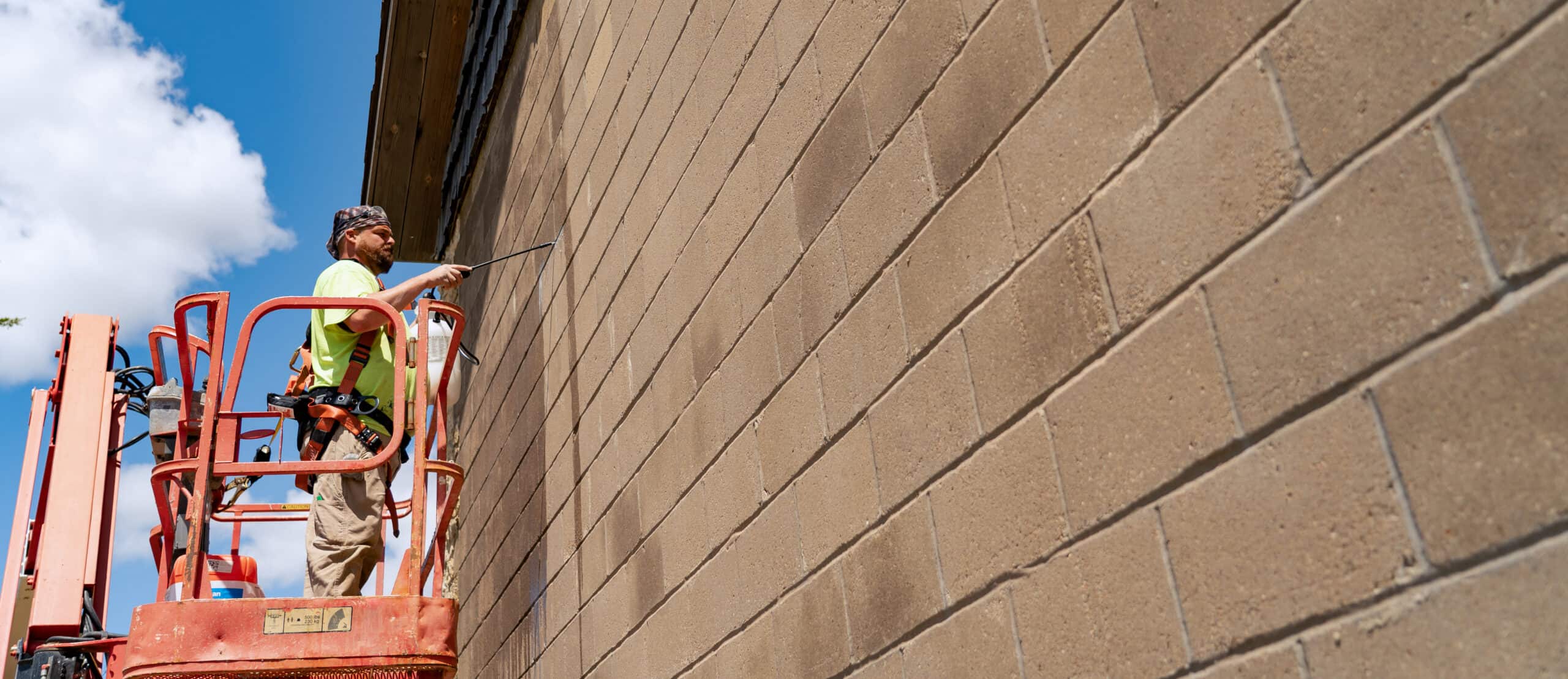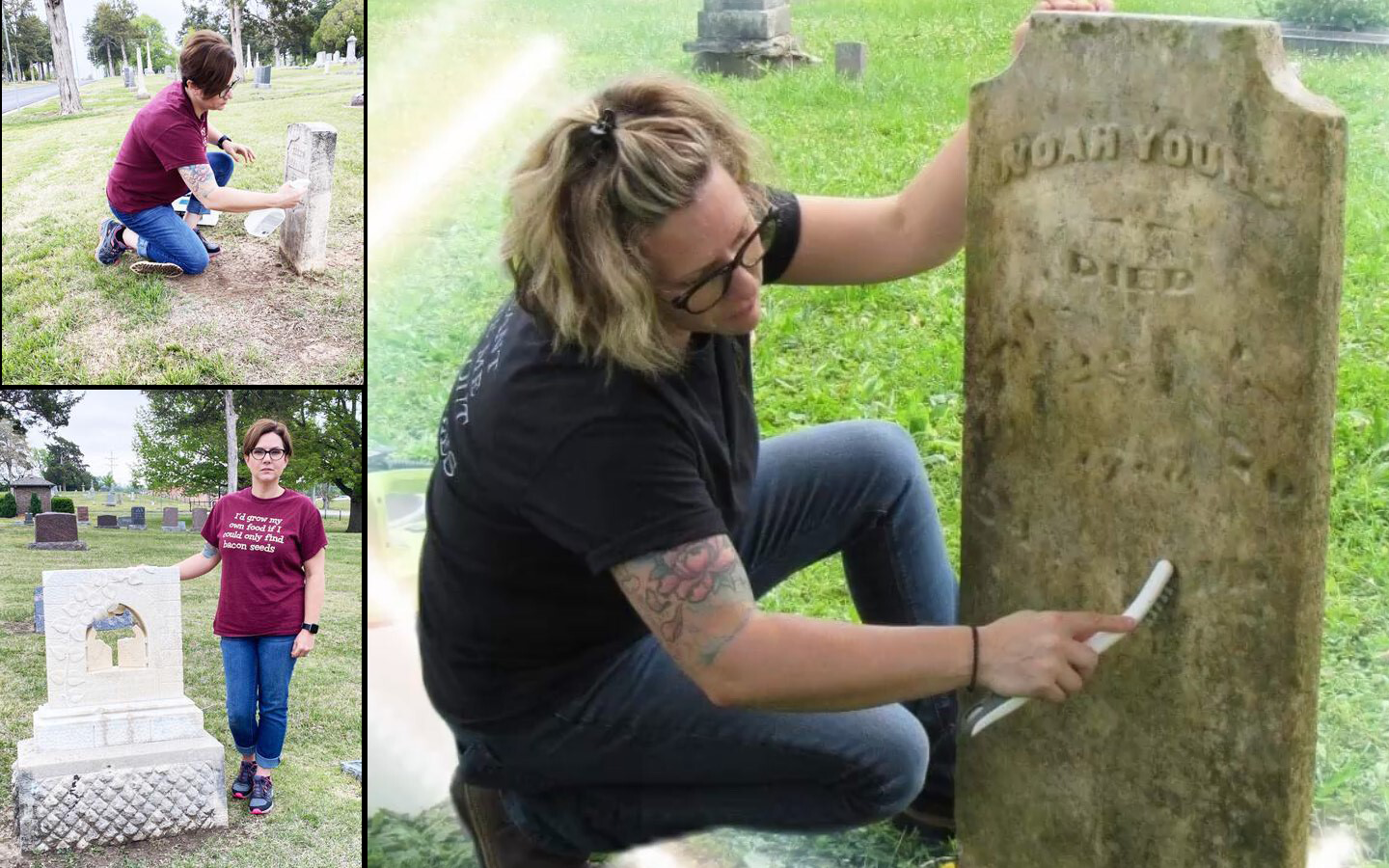Learn how to tell the difference between efflorescence and other mineral-derived stains, plus how to know when it’s problematic, and when it’s harmless.
Despite all the information in the world on masonry stains and removal, confusion remains about efflorescence, what causes it, how to identify it, and whether or not it’s a red flag indicating more serious problems in your wall assembly. We break down the biggest misconceptions about efflorescence.

Myth #1: “Any stain on the wall that’s white is efflorescence.”
Yes, efflorescence is white, but not all white stains are efflorescence. Other stains such as hard water stains, sealer blush or lime run can appear as a white material on the surface of nearly all types of masonry substrates. Beyond that, other stains that fall into the category of “efflorescence” by the word’s technical definition may present themselves in other colors ranging from brown, to green, to purple or even yellow. These may include stains like manganese, vanadium and more.
The stain Jake Boyer most frequently sees mistaken for efflorescence in the field is lime run, which is similar to efflorescence, but has a few distinctive qualities.
“The biggest different is when efflorescence is deposited on the surface, it remains water-soluble,” says Boyer, Vice President of Sales for PROSOCO. “On the other hand, when lime comes to the surface and deposits, it reacts with carbon dioxide, goes through a carbonation process and transforms from calcium hydroxide to calcium carbonate, which is also known as lime run. In severe cases, lime run can form into stalactites like what you would see in a natural cave.”
How do you know the difference from the naked eye? Two things, Boyer says.
Efflorescence will disappear when you pour water on it

“Splash some water on the stain. If it disappears in the presence of water, it’s efflorescence. If not, you likely have something else.”
Efflorescence will also come off on your finger, and it tastes like salt, whereas lime won’t come off on your finger, nor disappear when splashed with water, Boyer adds.
Efflorescence can be ruled out in this case

Myth #2: “Efflorescence will always go away on its own.”
This isn’t always the case, Boyer says. Because efflorescence is a stain that usually comes from the inherent properties of the masonry, it’s possible that the salts within the masonry will come to the surface and deposit as a stain just one time. If efflorescence occurs only once on new construction (in what some refer to as “new building bloom” when a structure goes through its first conditioning cycle), there’s a good chance efflorescence will go away on its own over time as rain sheds the stain away.
Boyer says it’s helpful to understand the three things that stains need and how they occur in the first place. Most stains need:
1) The source of the stain, which, in the case of efflorescence, is the salt inherent in the substrate.
2) The mobilization method to transport the stain source to the surface. This could be water or an improperly used cleaning product that can solubilize the stains and carry them out to the surface.
3) A pathway for the stain to get to the surface via pores in the substrate.
Efflorescence will come off on your finger (and lime won't)

A one-time occurrence of efflorescence may go away on its own eventually, but you can accelerate its removal with a mild chemical cleaning.
“Your best bet is to give it a thorough clean-down, allow it to dry, and apply a protective treatment,” Boyer says. “We can’t stop the pores, and we can’t stop the substrates from having salt, but we can prevent subsequent stains by stopping the water from getting in and solubilizing within the masonry.”
How long will new masonry take to dry? Here’s a good rule of thumb to remember: For every inch of thickness of the masonry, give it one month to fully dry out.
Fortunately, application of a penetrating protective treatment doesn’t require the substrate to be thoroughly dry all the way through, but the surface should be dry at least. If applying a film-forming protective treatment, the drier, the better, as these products don’t typically allow the substrate to breathe as much as a penetrating protective treatment.
Lime won't come off to the touch

Myth #3: “Efflorescence means there’s something wrong.”
Owners normally worry when efflorescence shows up, believing that it indicates something wrong.
While that certainly can be the case, it’s not an absolute truth. Here’s how to know when efflorescence rearing its head is a red flag telling you to investigate a little more.
In the scenario outlined above where efflorescence shows up in new construction, is either cleaned off or naturally rinses off over time without coming back, it’s most likely that “new building bloom” explained above.
“Often, you’ll see that once a building is conditioned, efflorescence will bloom more heavily and/or reoccur at the spandrels and panels between floors, because there’s typically no conditioning there,” Boyer says. “Always step back and look for patterns in the staining and eventually the building will tell you a story as to what’s going on behind or within the walls.”
On the other hand, when efflorescence comes back after it is initially removed, that’s your sign to look deeper into the wall for issues.
“Efflorescence can be your best friend,” Boyer says. “It can identify a bigger issue at hand before it becomes a huge issue. If water is getting into your wall and you’re getting efflorescence, you need to address it before it absorbs into the wall where it can corrode fasteners, cause spalling and create other, more severe problems.”
When efflorescence recurs, the stain itself is the symptom, not the problem.
The problem is how water is getting into your wall assembly. Efflorescence is more likely to recur if you don’t have a means to keep water out of the wall and/or a pathway for incidental water that does get in, to get out of the wall.
Following a few best practices from day 1 can help prevent water intrusion in your wall assemblies.
1. Store masonry off the ground and cover it from the elements.
2. Always provide an escape route for water with proper flashing and weep holes, making sure mortar doesn't clog the weeps.
3. Pay attention to mortar joints. Be sure to completely fill voids, tool joints properly, and caulk or fill any other voids.
4. Protect walls under construction, and temporarily cap walls every day and during rain events.

How do I remove efflorescence from my masonry?
First, remove any stain material mechanically with a soft brush. “You want to remove as much as you can mechanically so you’re relying on the chemical to only handle what’s left,” Boyer says. “Efflorescence comes from water, and in the cleaning process you’re introducing water. You want to use ample water, but you want to make sure you’re only using what you truly need.”
Choose a proven cleaner that’s purpose-built and purpose-designed for new construction clean-down. Light Duty Concrete Cleaner is one of the least aggressive options and doesn’t contain hydrochloric acid. PROSOCO’s Vana Trol, 600 and Custom Masonry Cleaner are also effective on more severe cases of efflorescence.
“You don’t need a strong concentration of it,” Boyer says. “Always test first in the least conspicuous area you can find and start with the mildest dilution, working your way up until you find the sweet spot.”
“Never leave a cleaning product on the wall without thoroughly flushing it out with water before walking away. Leaving the cleaner on the wall can affect the natural pH of the wall and the way it interacts with subsequent protective treatments, and it can also contribute to longer term secondary staining such as vanadium or manganese.”

How do I protect masonry from future efflorescence staining?
Any protective treatment will assist in keeping water out and preventing future occurrences of efflorescence and most other stains. Boyer recommends picking a product like Siloxane PD, Siloxane WB Concentrate, one of the Blok-Guard & Graffiti Control products or one of the Saltguard products. If you’re dealing with a calcareous stone such as limestone, marble or travertine, you’ll need to go to a more specific protective treatment such as one of our Natural Stone Treatment products to ensure the proper chemical bond of the treatment to the stone.
As effective as these water repellents are, they can’t make up for improper construction processes. “If you don’t have fully filled head joints and you just caulk a hole, you’re still leaving some vulnerabilities to moisture getting in somehow.”
“You’ll never keep 100% of the water out of the wall, but allowing that wall to dry after water does inevitably get in is the real key.”
![]()




